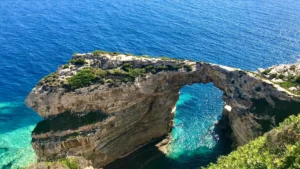War veterans and history enthusiasts alike will find plenty to see and do throughout Southeast Asia. The region, after all, was hotly contested ground throughout the wars of the 20th century. The Allies and Japan fought over much of Southeast Asia during World War II; in the Cold War that followed, Indochina itself was engulfed in a conflict that only resolved in the 1970s.
These wars have not been forgotten. Numerous battlegrounds, museums and cemeteries throughout Southeast Asia honor these struggles and the ordinary people who fought them.
Remembering the Viet Nam War
What Americans call the “Viet Nam War” remains within living memory for many Vietnamese, who have commemorated the conflict wherever it was hardest fought. At Viet Nam’s Ho Chi Minh City – the capital of the former South Viet Nam – the War Remnants Museum and the Cu Chi Tunnels depict two sides of the same war.
The War Remnants Museum in District 3 tells the story of the 20th century’s wars from the perspective of the Vietnamese, complete with captured war machines like a massive A-1 Skyraider bomber and a “Daisy Cutter” bomb (don’t worry, the bombs on display have been disarmed).
The Cu Chi Tunnels is further from the city, but is more hands-on – it’s a recreation of the tunnel system dug by the Viet Cong to evade American patrols and to deliver supplies through enemy lines.
Museums of World War II
World War II, while much further in the past, affected a wider swath of Southeast Asia; its imprint remains throughout the region’s many museums and war cemeteries. From Manila in the Philippines, Corregidor Island can be reached by an hour’s ferry ride – the whole island has been set aside as a memorial to the Japanese conquest, with bombed-out barracks and inoperative guns providing a silent witness to the war years.
A different kind of memorial stands in Singapore, where the site of the British surrender to the Japanese has now been remade into an interactive exhibit on the war years. The Ford Motor Factory was the first of its kind in Southeast Asia, but after it ended factory operations in 1980, the Singapore government remade it into a museum to keep the harsh memories of the Japanese occupation years alive.
Over in Sabah, Malaysia, the Kundasang War Memorial and the Sandakan War Memorial both stand in tribute to the Australian soldiers who died en masse during the infamous Sandakan “death march” to Ranau. The former is a series of connected gardens that promote contemplation of the soldiers’ sacrifice, while the latter is the site of an infamous prisoner-of-war camp where thousands died from maltreatment by the enemy.
Cemeteries for the World Wars
For the fighters who didn’t make it to the end of the wars, the region’s countries have seen fit to honor their sacrifice by erecting military cemeteries to hallow their remains.
Near Yangon in Myanmar, the Taukkyan War Cemetery contains the remains of soldiers who died in both World Wars – about 52 from the first, and over 6,300 from the second. A series of memorial pillars commemorates 27,000 soldiers from Great Britain and her allies who were killed in the second world war, but were never found again.
In Manila, the Philippines, the Manila American Cemetery serves as the region’s counterpart to Arlington Cemetery in the U.S. Its 152 acres contains the largest amount of American World War II graves – over 17,000 soldiers are interred here, with Tablets of the Missing honoring an additional 36,000 soldiers who went missing and were never found.
In Labuan, Malaysia, the Labuan War Cemetery commemorates the hallowed World War II dead, mainly Commonwealth troops who died during the Japanese invasion and occupation of Borneo. Many of the soldiers buried here died during the Sandakan Death Marches.







